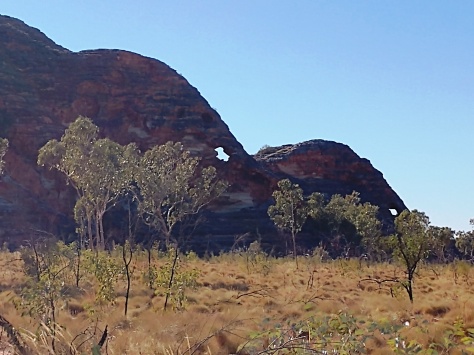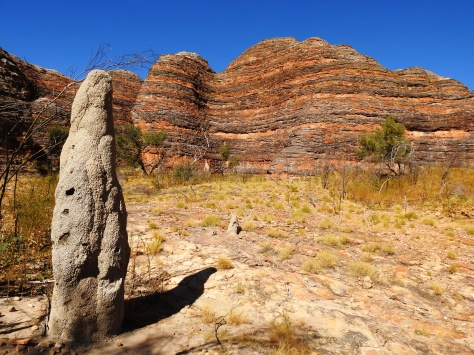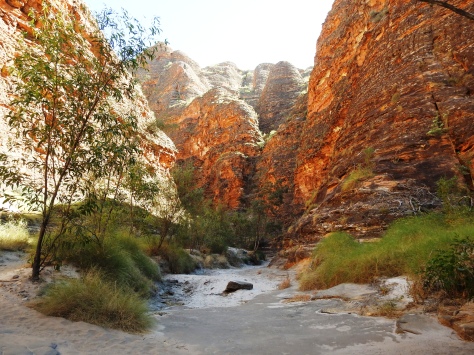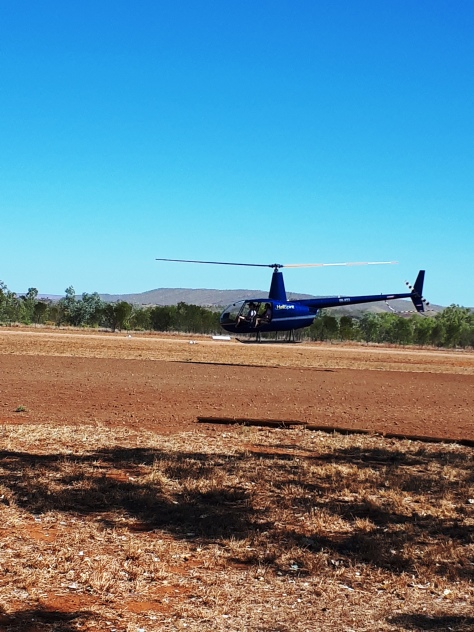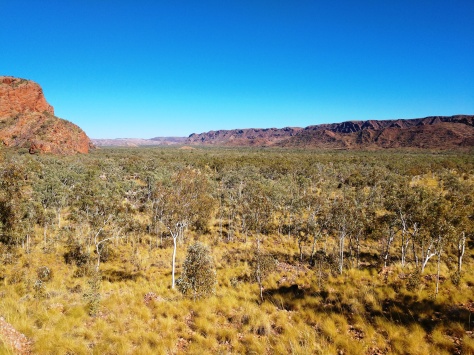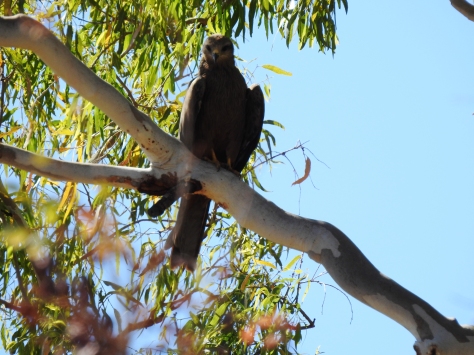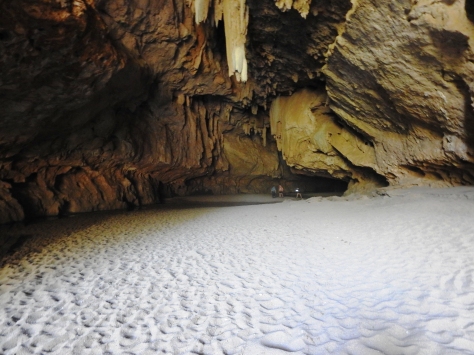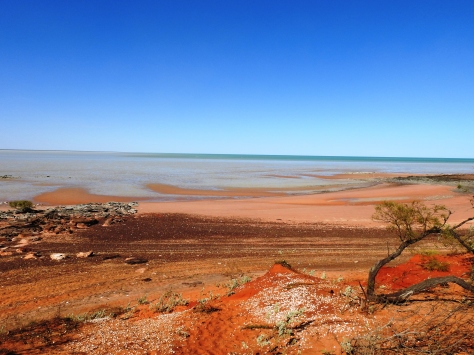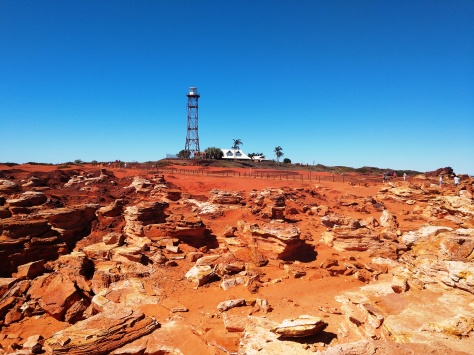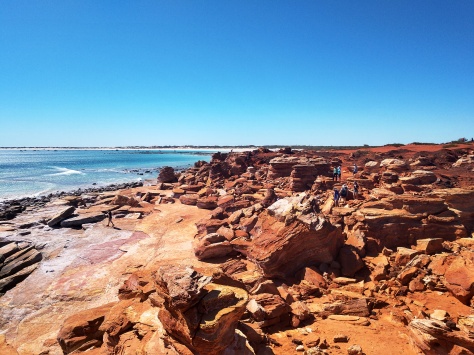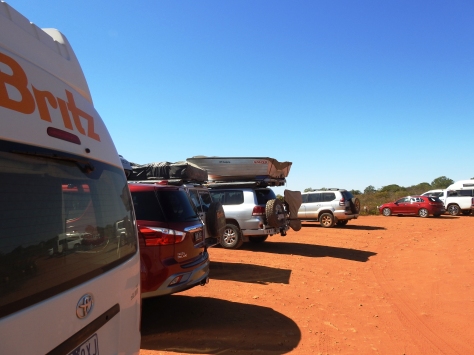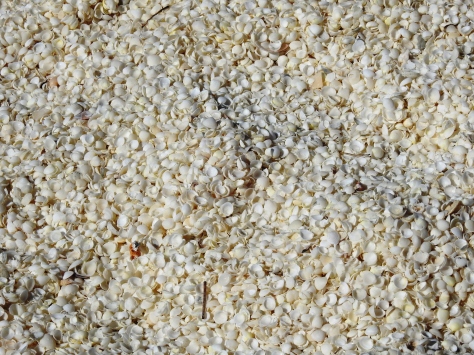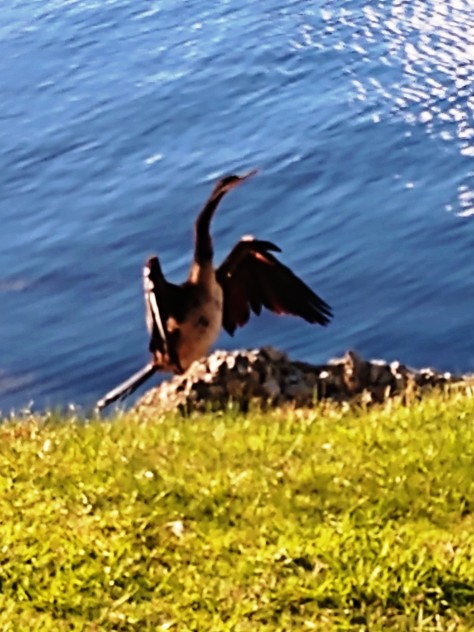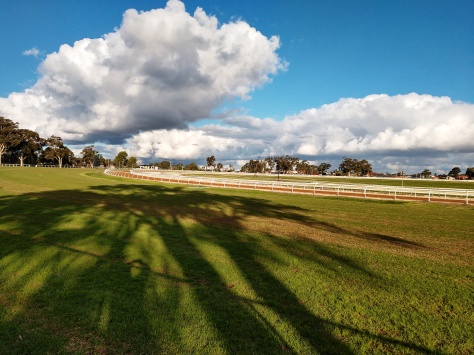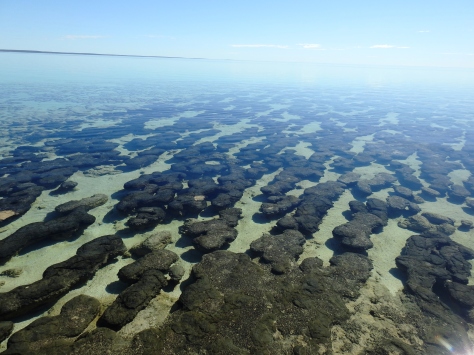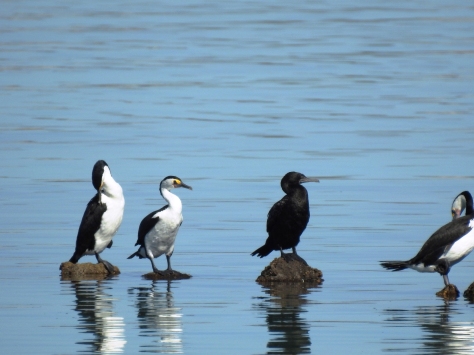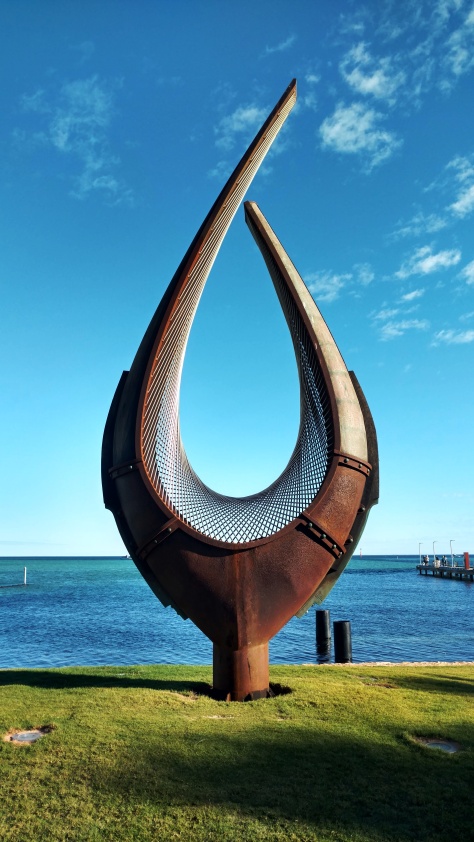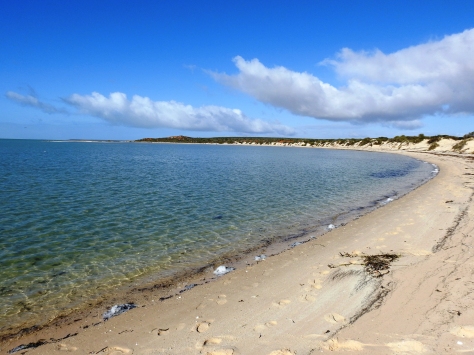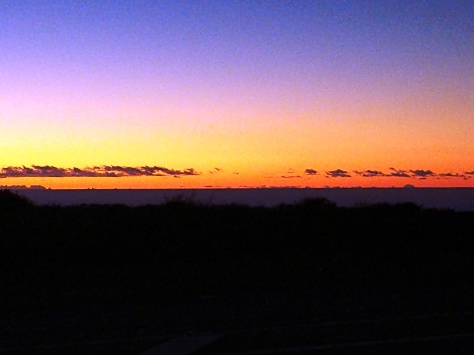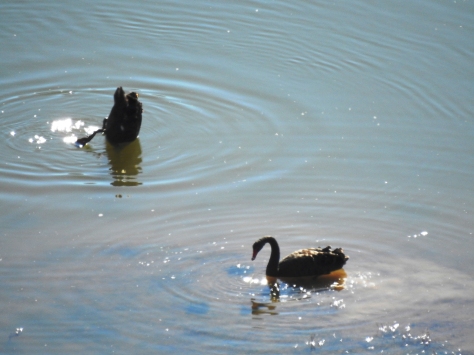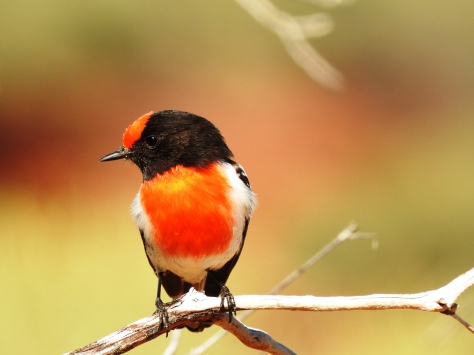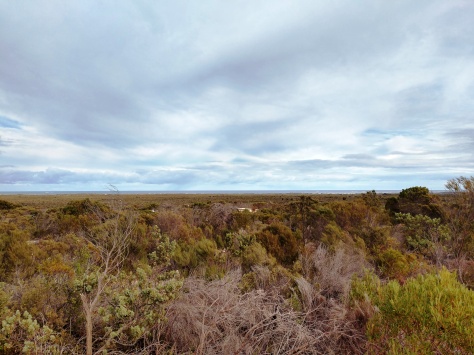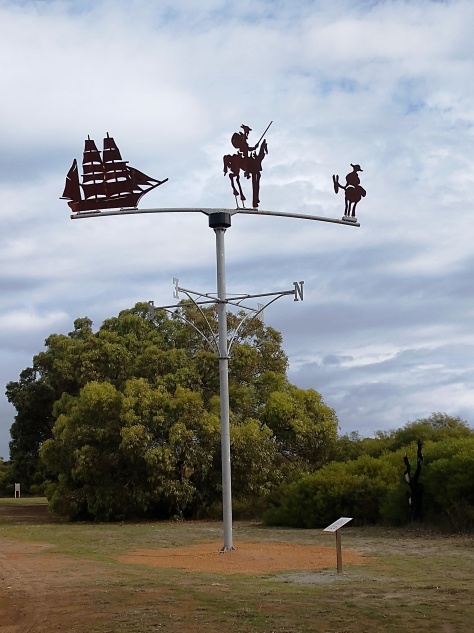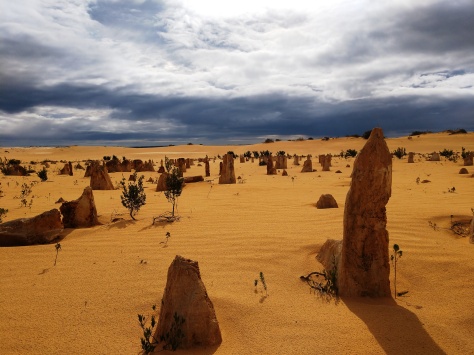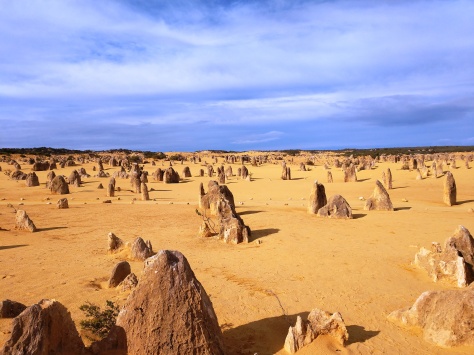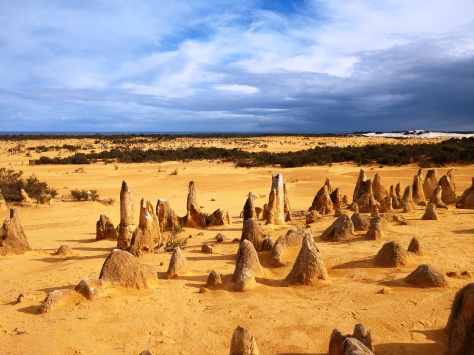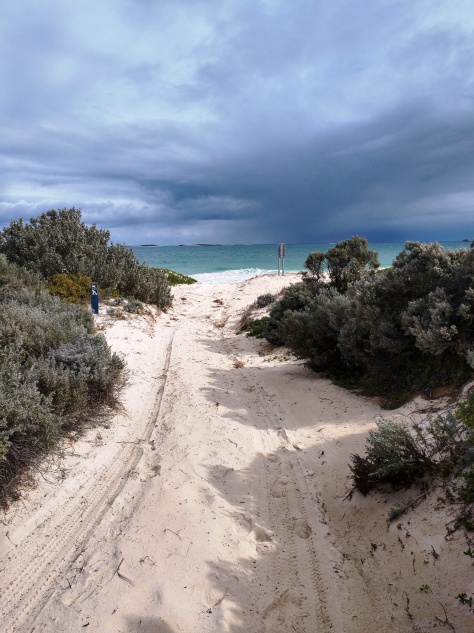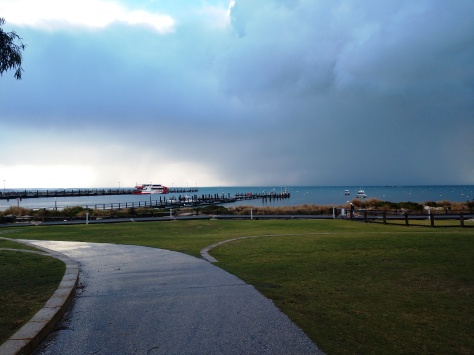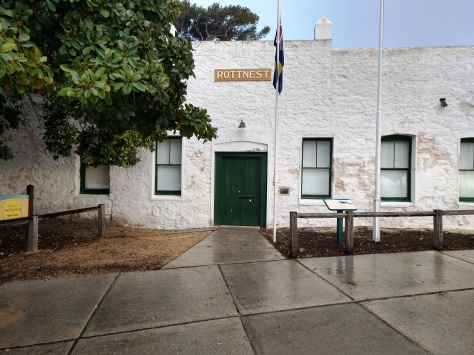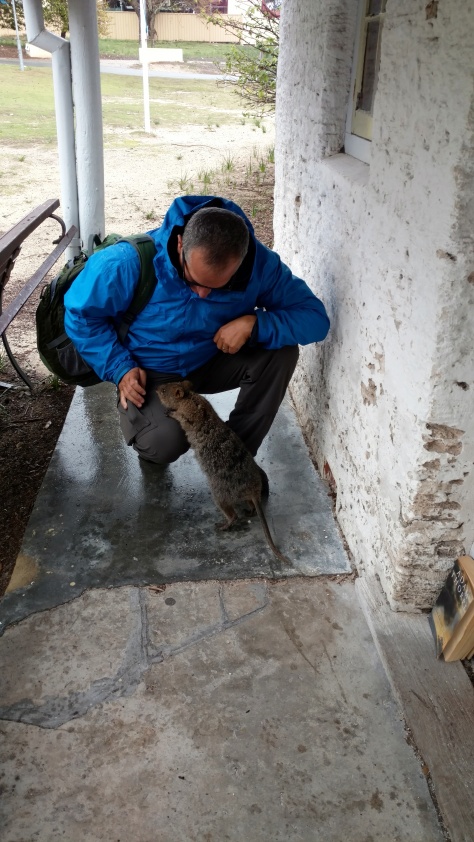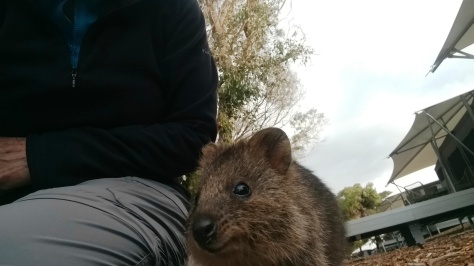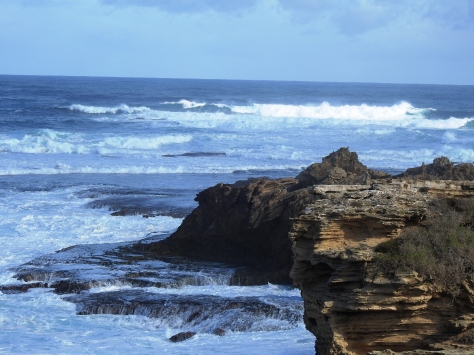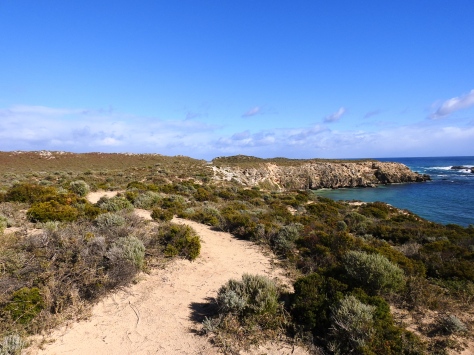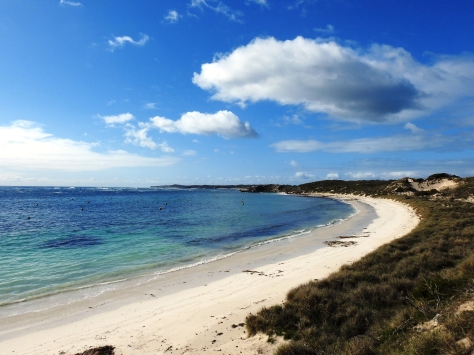Using the Australian pronunciation rule where nearly every vowel is replaced with the letter A, our next stop, the town of Kununurra, was pronounced (ka-na-NAR-a). This town of 5,000 folks was created in 1961 to support the construction of the Ord River Dam, which was finished in 1972. The Ord River Dam was constructed as part of the Ord River Irrigation Scheme to capture the wet season water runoff down the Ord River and to create a large farming area in this mostly arid region. The dam created Argyle Lake, the 2nd largest man-made lake in Australia, which has a surface area of 271 square miles and holds 18 times the volume of water that is in Sydney harbor. Due to the amount of rain that falls in the wet season it only took 3 years to fill the lake.
Because the dam now provides a flood control system for the Ord River it no longer goes dry in the dry season like all the other rivers in the Kimberley region and has become a huge sanctuary for both plants and animals.

The consistent flow and height of the river have allowed grasses and lily pads to grow in areas that would flash flood prior to the dam. The grasses help to stabilize the shoreline. Here a comb-crested jacana walks across the lily pads in search of food, where they will spend their entire life on the lily pad surface.

Here was another Australian darter drying its feathers after hunting for fish under water.

Cockatoos roosted in large groups in the trees along the banks.

In the grass along the bank a purple swamphen was building a new nesting area.

We also saw a large colony of flying fox bats that are over a foot tall and have a 5-foot wingspan hanging from the trees. Our guide thought this tree may be their nursery. At dusk the young adults fly out to eat, leaving the newly born bats with the older bats. Just prior to sunrise the young adults return to let the older bats fly out to eat. The younger bats will not eat anything within 2 miles of the nursery so that the older bats do not have to fly as far for their food.

Of course, there were crocodiles in the river.

Our guide gave a talk on the Ord River Irrigation Scheme; its past, present and hopeful future. A lot of the water is used for farming irrigation in the fields that are adjacent to the river. The hope is that one day the area will become the breadbasket for Australia. They are still experimenting with the best crops for the area. Sandalwood is currently the largest crop, but recent successful harvests of wheat and cotton may change that going into the future. Chinese investments are helping with some of the future expansion plans.

This was our tour boat, tucked into the bank while we had lunch along the river.

The distance of our tour, from Kununurra to the dam, was over 45 miles. The three engines on the back of our tour boat allowed us to get between points of interest rather quickly.

Other folks were also on the river. These two were part of a multi-day canoe camping trek along the river. Given the number of crocs we saw along the banks, you would need to choose your camp spots wisely.

The 325-foot tall dam itself was a rock wall dam of locally quarried stone. The sign sums it up, “Faith in a pile of stones”.

This is from the top of the dam looking down onto the Ord River. You can see our tour boat off in the distance heading back to Kununurra.

Looking the other direction over the dam, you see a small section of the 271 square miles that make up Lake Argyle.

The lake submerged the majority of the Durack family station, or ranch. We visited the Argyle Homestead Museum, a look back at the Durack family and the part that they played in the early days of the Kimberley region.
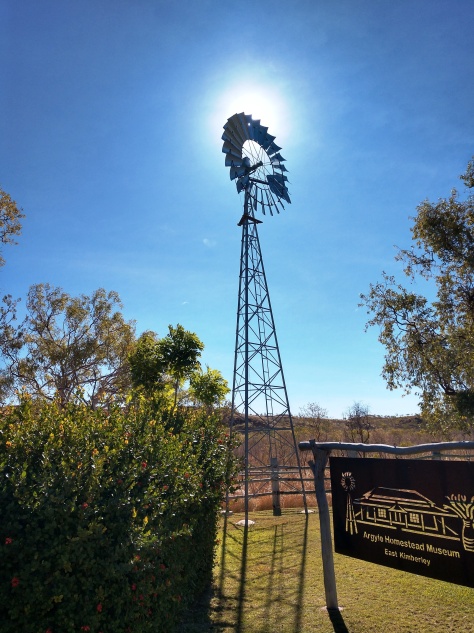
The original Durack homestead was built in 1895. It was constructed of limestone blocks with crushed termite mounds as mortar. The homestead was deconstructed at its original site, now deep under Lake Argyle, and re-assembled at its new location for current and future generations to see.

The grounds around the house were very colorful with local flowers in bloom. There was a lone dingo in the brush around the homestead, possibly waiting for a wandering tourist – lol.

A western bowerbird nest was in the brush along the perimeter of the homestead. The male bowerbirds create these nests to attract a mate, using colorful stones to entice the females.

We then made our way to another wilderness camp named Emma Gorge at El Questro.









